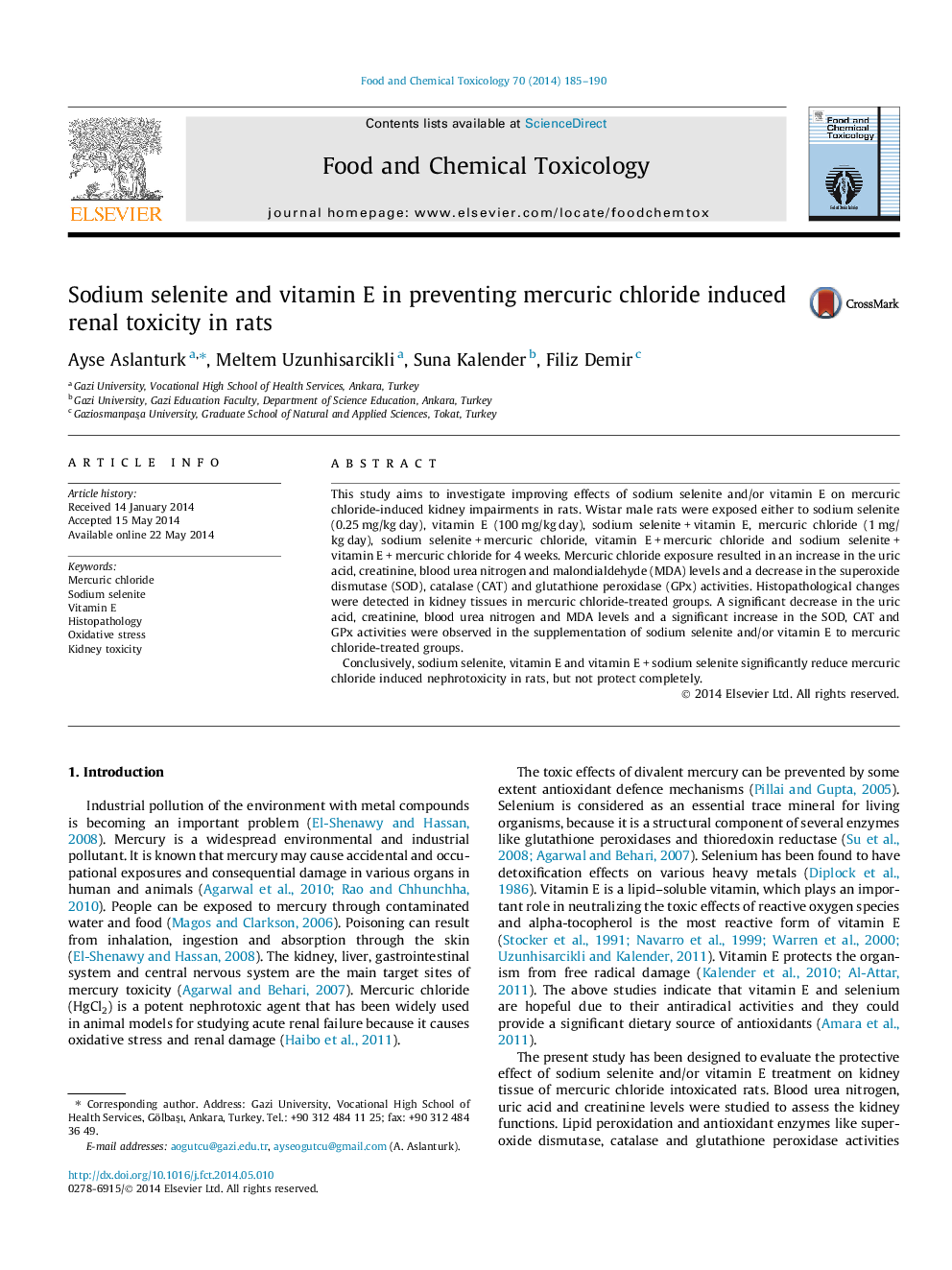| Article ID | Journal | Published Year | Pages | File Type |
|---|---|---|---|---|
| 5850178 | Food and Chemical Toxicology | 2014 | 6 Pages |
â¢Mercury is the most dangerous of all the heavy metals and it is also a widespread environmental pollutant.â¢Vitamin E and sodium selenite are potential antioxidants protecting cells from oxidative stress.â¢Mercuric chloride caused histopathological and biochemical alterations in kidney tissue of rats.â¢Sodium selenite and/or vitamin E decreased mercuric chloride toxicity, but did not provide complete protection.
This study aims to investigate improving effects of sodium selenite and/or vitamin E on mercuric chloride-induced kidney impairments in rats. Wistar male rats were exposed either to sodium selenite (0.25 mg/kg day), vitamin E (100 mg/kg day), sodium selenite + vitamin E, mercuric chloride (1 mg/kg day), sodium selenite + mercuric chloride, vitamin E + mercuric chloride and sodium selenite + vitamin E + mercuric chloride for 4 weeks. Mercuric chloride exposure resulted in an increase in the uric acid, creatinine, blood urea nitrogen and malondialdehyde (MDA) levels and a decrease in the superoxide dismutase (SOD), catalase (CAT) and glutathione peroxidase (GPx) activities. Histopathological changes were detected in kidney tissues in mercuric chloride-treated groups. A significant decrease in the uric acid, creatinine, blood urea nitrogen and MDA levels and a significant increase in the SOD, CAT and GPx activities were observed in the supplementation of sodium selenite and/or vitamin E to mercuric chloride-treated groups.Conclusively, sodium selenite, vitamin E and vitamin E + sodium selenite significantly reduce mercuric chloride induced nephrotoxicity in rats, but not protect completely.
